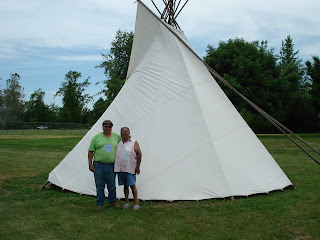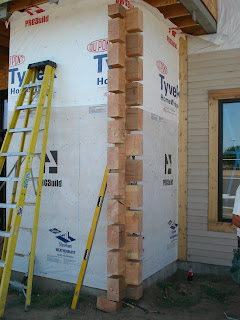


 Ah, grants ... without them we could not undertake nearly as much in the way of exhibits and programming as we have in recent years. Despite the popular misconception that grants represent "free money," keeping up with them is an extraordinary effort in record-keeping and tracking.
Ah, grants ... without them we could not undertake nearly as much in the way of exhibits and programming as we have in recent years. Despite the popular misconception that grants represent "free money," keeping up with them is an extraordinary effort in record-keeping and tracking.To that end, we recently received a slightly more than $52,000 grant from a federal source known as the Institute of Museum and Library Services (IMLS). The first piece of understanding is that, for exhibit purposes, this is a large chunk of money for the Museum. Secondly, it does not come without 'strings,' in that we must match it with another $53,000 in funding and in-kind value and issue periodic reports as well as a final assessment.
This grant will assist in research, design, and installation of a new exhibit with the working title, Through War and Peace: American Military and the People of the Homeland Tribes. We aim to showcase the interconnectedness between the various aspects of armed forces, Euro-American settlers, and the Indian people whose traditional homeland happens to be where we call home today. We also plan to purchase several life-like mannequins and replica uniforms depicting various eras of occupation at Fort Walla Walla. Also to be installed will be items from our Indian artifact collection and Fort Walla Walla military items. Ahem ... it's going to be a L-A-R-G-E exhibit.
Taken separately, these components would yield an incomplete, possibly false story of the historic era from the days of Lewis & Clark (a military expedition) through the region's participation in World War II. The ramifications continue to this day and will likely into the foreseable future. The exhibit will be completed by April 1, 2011.
With a pair of grants from the Lewis & Clark National Historic Trail, we'll re-install our Lewis & Clark diorama and include a new backdrop mural by acclaimed local artist Leslie Cain. It will feature a view from across the Columbia River at the mouth of the Walla Walla River, the site of Yellept's village and and location of the 'elegant white horse' gift exchange.
Building Progress: I took a walk through and around the entire structure today. I can report that electrical outlets and plumbing fixtures will be coming along, as soon as the mudmen conclude their work ... which will be soon. I also managed a trip upstairs to the storage area that will be above the south end, restrooms, utility room, and public access study area. Being able to store useful items in a climate-controlled area close to exhibits will be a great step-saver for the Collections & Exhibits folks.
Today's photos, from the top: the stairwell into our upstairs storage area, a mudman working on the restrooms exterior, the Grand Hall as it appears from the west entrance (the 'back door'), and our Lewis & Clark diorama as it appeared in the now-departed Exhibit Hall 1.












.JPG)






















-Katherine+Cordy-Kamika+Shaw_3.27.07.JPG)














